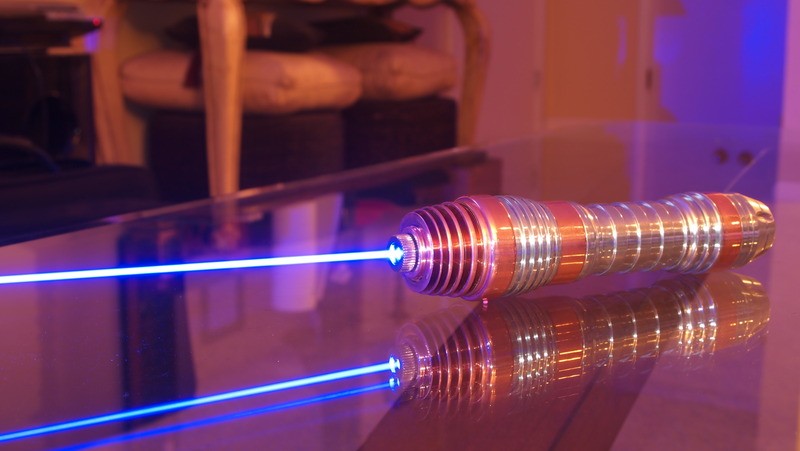

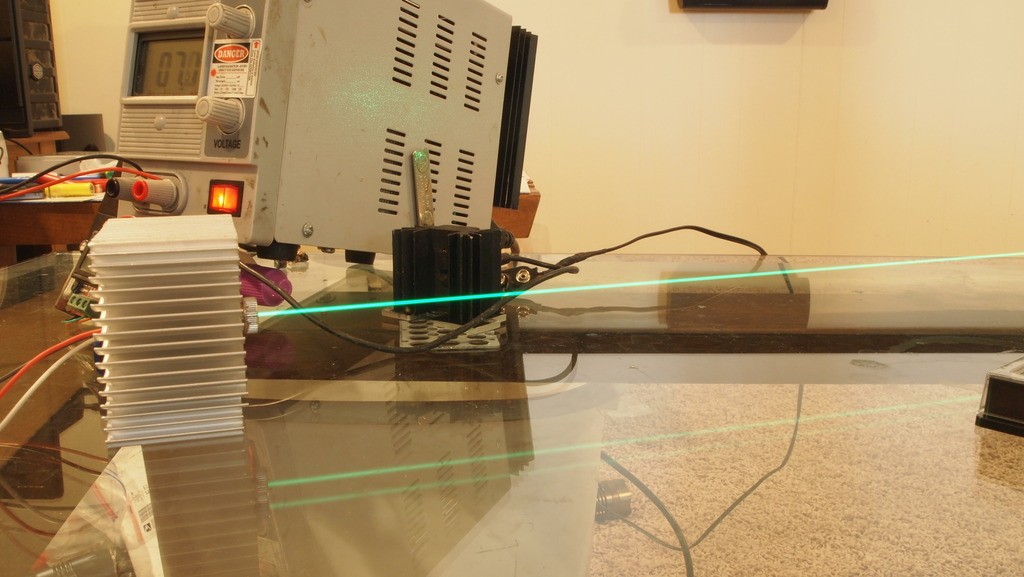
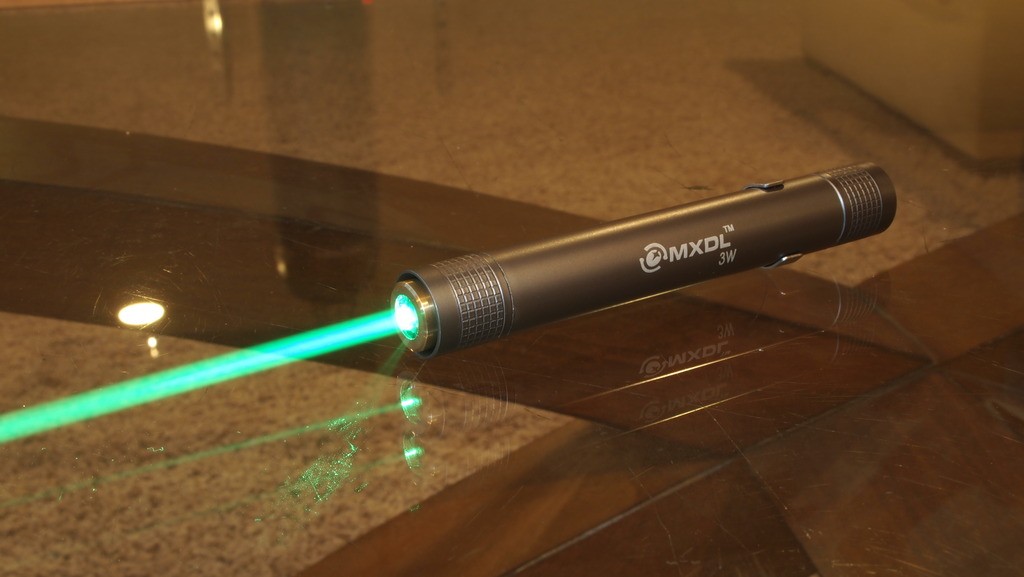


I was really surprised how bright they really are and am very pleased with these diodes. They are the beginning of a new era here for sure. I want to start off by saying these run extremely stable from what I have seen so far and they appear to be pretty damn tough as I have doubled the datasheet recommended current and have not seen any degradation on the diode. They can double the datasheet output or more but it is yet to be determined if it is good to run them that hard yet.

Anyway here we go. They seem to have a lasing threshold of 70mA and there you will see about 15mW. This test was done with a G-2 lens.
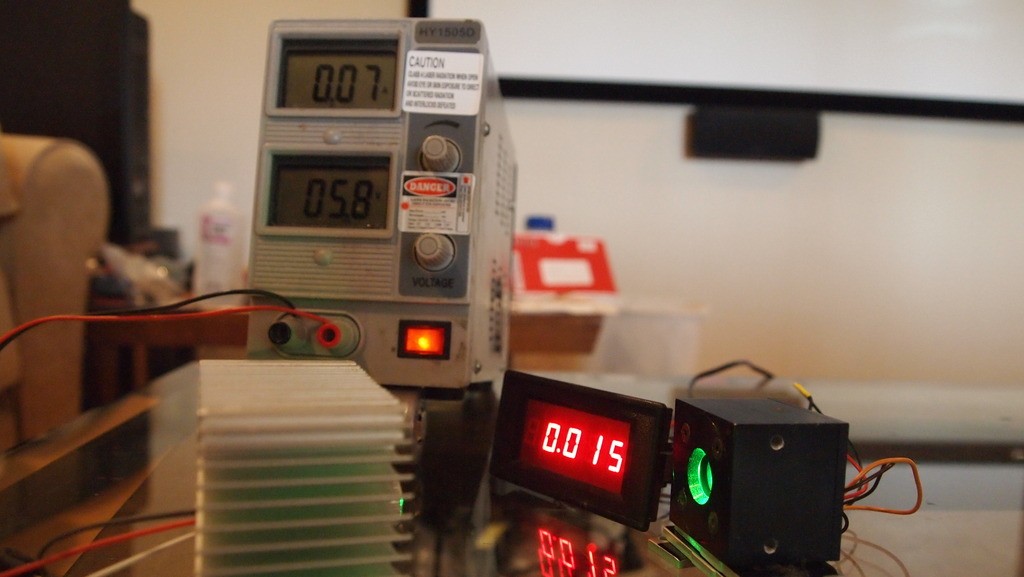
Next on to 100mA and it gets about 28mW.
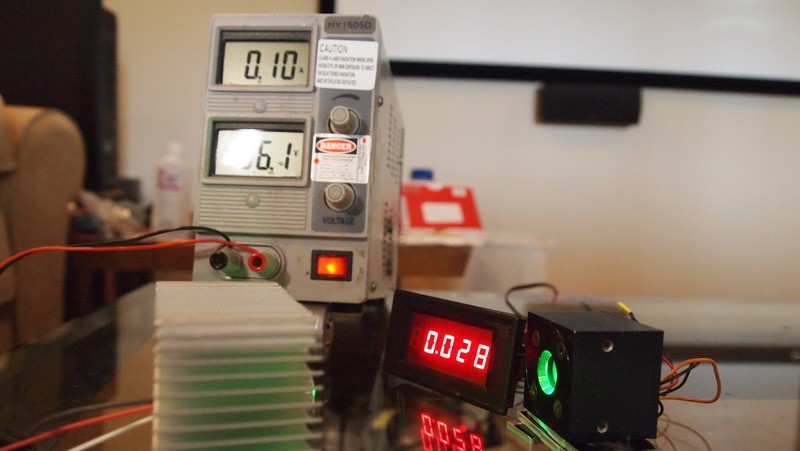
Next to 150mA and it jumped to 55mW. 27mW gain for 50mA.

Next to 200mA max recommended current via the datasheet and we are seeing just under 80mW. 30mW gain for 50mA. This really may be the sweet spot.
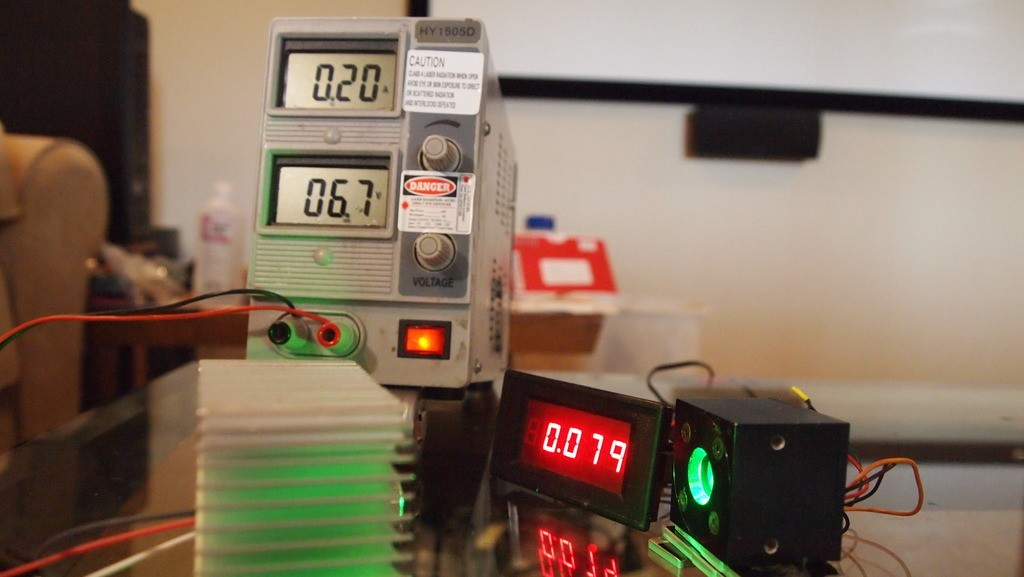
Now to 250mA and a jump to 96mW. Only a 16mW gain for 50mA.


Next to 300mA and 107mW. So we are falling off the efficiency curve at this point. 11mW gain for 50mA.
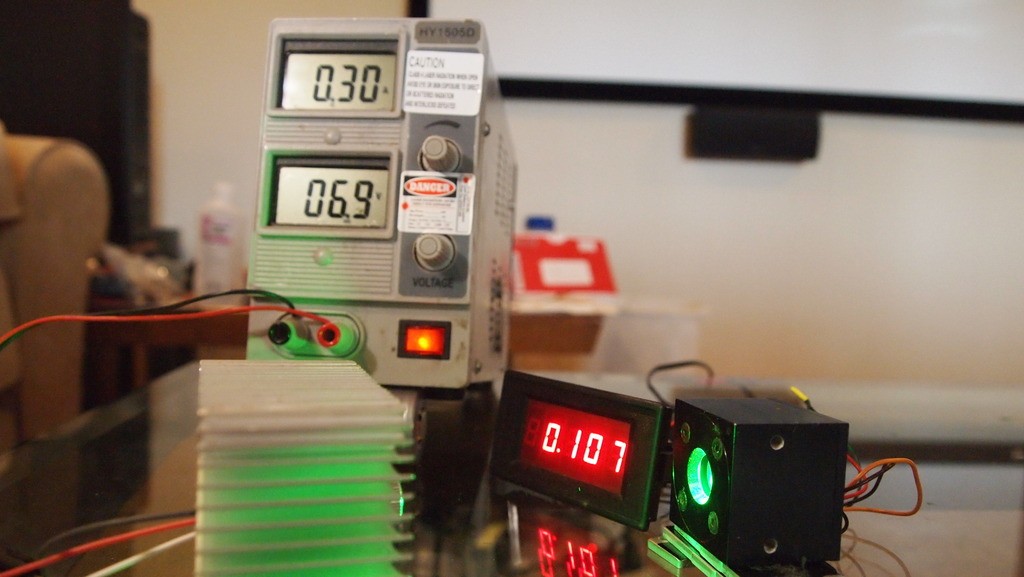
Next to 350mA and 116mW. 9mW gain for 50mA.

And just for good measure on to 400mA and 118mW. 2mW gain for 50mA.
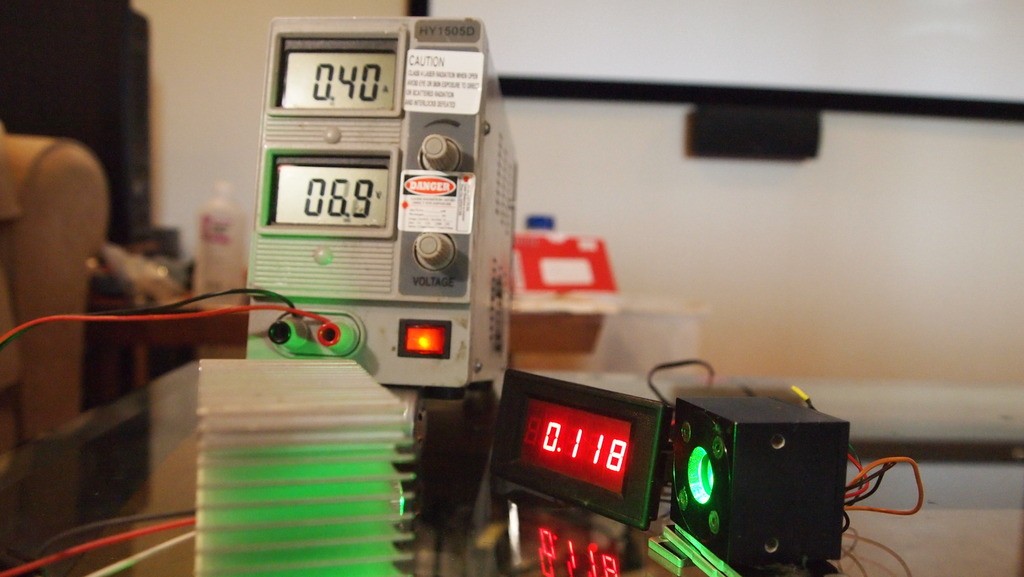
So there we have it. With an acrylic lens you are probably looking at a 15-20mW decrease so looks pretty solid 80mW with a G-2 and probably 50mW with an Acrylic. There are still wavelength and controlled temperature experiments that can be done but I think that about sums up the output capabilities.



